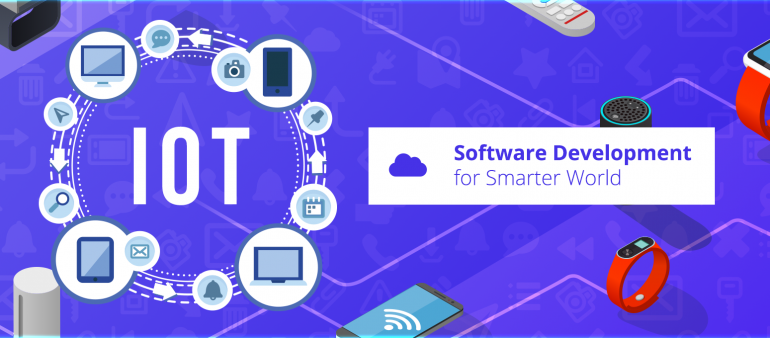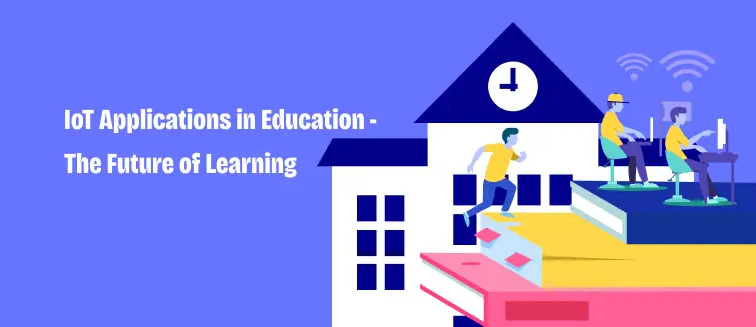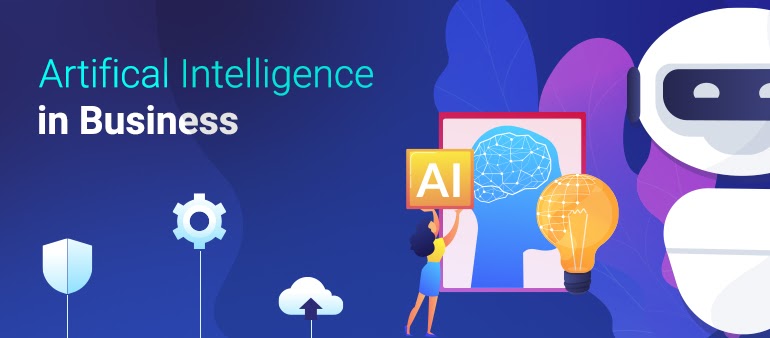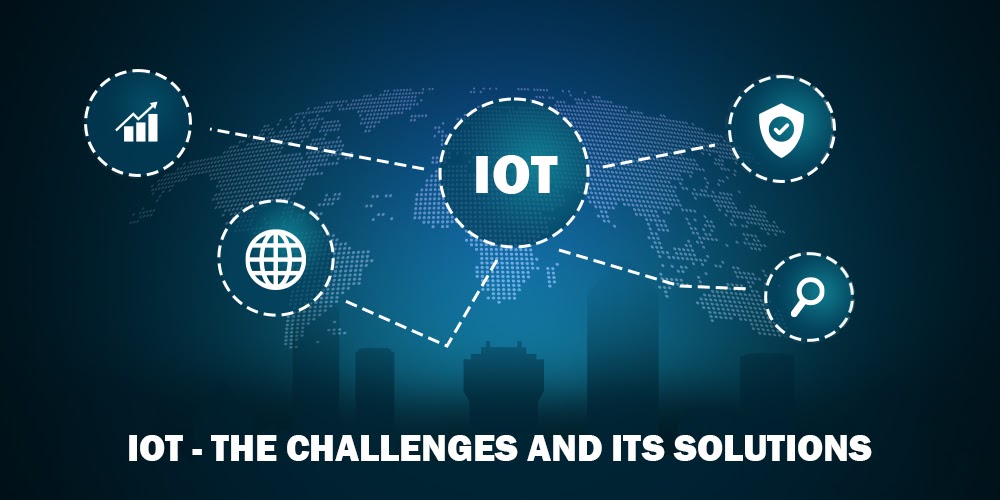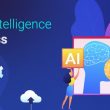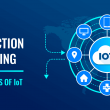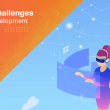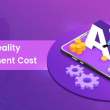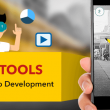There’s no doubt that our world is quickly moving towards connected things that operate smartly over the Internet. With significant advancements in processors, sensors, hardware, wireless connectivity ICs, edge computing and others, IoT software development is rapidly gaining ground for various exciting applications such as smart home, smart offices, smart factories, connected health, connected logistics, transportation, smart grids, and many more. In 2019, the global Internet of Things (IoT) market was valued at $690 billion and was expected to grow at a CAGR of 10.53% to reach $1256.1 bn by 2025. If we talk about the IoT devices market, it is expected to reach the value of $158,140 million by 2024. Other revolutionary technologies like Artificial Intelligence and Machine Learning (AI and ML) are also playing a big role in fueling the growth of IoT applications that make our machines and devices not just interact with each other but also learn and act smart like humans. And, it’s not just big names such as Amazon, Apple, Cisco, Huawei and more that are venturing into IoT development, but many startups are also emerging to ride the wave of IoT for building a smarter world. That said, let’s look into 7 important factors to consider for IoT software development.
What it takes for IoT Software Development
Operating System
When compared to desktops and mobile devices, IoT devices have less power, memory, processing and size. It is thus important to choose an IoT operating system that fits the capabilities of the device and the requirements for its functionality. The architecture of IoT systems involves a large number of sensors connected to gateways, which in turn are connected to remote cloud platforms. IoT OS is critical to connectivity, security, networking, storage, remote device management, protocol support, security and other IoT system needs. Some IoT systems have the capability to process data in real time and are referred to as real-time operating systems (RTOS). As every IoT device has its perspective, the choice comes down to the careful assessment of all the requirements and capability of different IoT operating systems available in the market. However, according to the IoT Developer Survey, Linux remains the top IoT OS choice for IoT microcontrollers, constrained devices and gateways.
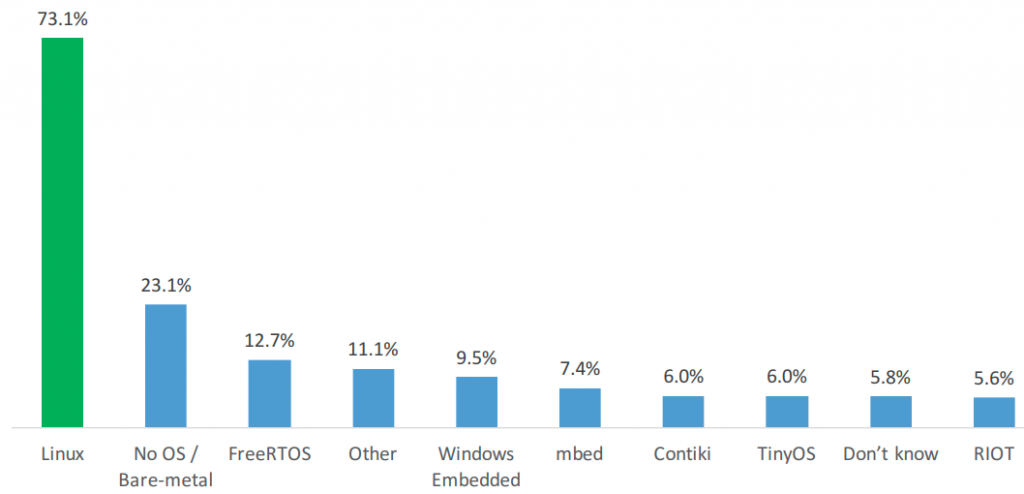
Source: IoT Developer Survey
IoT Protocols
What makes the Internet of Things work is interaction between sensors, devices, gateways, servers, and user applications. But, there are IoT standards and protocols to follow to make an IOT system function and transfer information in the online mode only when devices are safely connected to a communication network. General protocols used for personal computers, smartphones or tablets may have IoT devices constraints such as bandwidth, range, and power consumption, which is why multiple IoT network protocols have been developed and new ones are still evolving. In addition to wired (USB, Serial, Ethernet, etc.) and wireless (Wi-Fi, BT, ZigBee, LoRA, etc.) protocols, IoT systems have multiple IoT protocols that typically have low transmission overheads like MQTT, CoAP, AMQP, XMPP or UDP. These IoT protocols allow to produce smaller data overheads and optimize for use in restrictive device and network environments. However, which one to choose to fully meet your requirements can be tricky. Also, there are at least 10 implementations of each IoT protocol, thus confusion is inevitable. But, you can easily find the resolve by consulting an expert IoT developer and service provider to get things going right for your IoT system.
Data Collection & Processing
Since IoT applications generate huge amounts of data, data collection and processing play a big role in making IoT systems work well. So, a lot of planning needs to be done for the way data is collected, stored or processed within an environment. Data size stored on the cloud and compliance with platform requirements are other two important factors to consider for effective IoT data collection and processing. It’s only good to involve data experts, analytics engineers and machine learning experts to get vital insights from data stored. In IoT software development, data plays a big role but what’s even more important is how the collected data is processed and used.
Cross-Platform Compatibility
Cross-platform compatibility is a very crucial aspect of IoT development as the IoT ecosystem includes devices with different architectures, protocols and operating systems. The IoT development team must achieve a right balance between hardware and software functions so that the IoT platform delivers the best performance despite heavy OS, device updates and bug fixings. IoT applications run on the web and mobile devices as well, hence need to be compatible. There are SDKs and APIs available from many vendors to add new functionalities to an already developed IoT application.
Security
As IoT is all about numerous connected devices, IoT network can be vulnerable to hacking and other cyber attacks. As more and more IoT applications are being built for homes and other personal spaces, hackers may have multiple juicy targets to scan for vulnerability and spy on people. In fact, security is one of the most important concerns of IoT development and the 2016 Dyn cyber attack is worth a reminder about the vulnerability posed by IoT. To deal with these precarious situations, developers are currently using communication-layer security (TLS or DTLS) and data encryption as the best remedies, but blockchain or distributed ledger technology is likely to surpass them as it matures in the future and the barriers making it sometimes impractical for constrained/embedded devices gradually disappear. Learn how Blockchain and IoT Technology empower each other.
Quality Assurance
Quality assurance is another important aspect of IoT software development as IoT is inherently a complex shared system with numerous integrated network components, applications and resources. Without proper testing, there may occur constraints in communication, computation and energy. To develop a reliable and optimized IoT device, quality assurance is a must and all underlying processes and each small entity should be tested in detail. Among various types of testing, some are component testing, exception testing, compatibility testing, performance testing and security testing. The QA team plays a very important role in detecting errors that hinder the ability of an IoT platform to work efficiently and the ability of the entire network of IoT devices to work well with each other and deliver as expected.
User-Friendly Design
No matter how complicated it is to build an IoT application, users must not experience any trouble using it. So, an IoT app should be design-driven and as simple as possible for use. No user wants to read a manual to install and set a new device or update a smartwatch. This is why it’s important that IoT developers and designers work in tandem from the beginning to ensure:
-
- Secure but simple onboarding
-
- Seamless transition between devices and systems
-
- User experience personalization and adjusting products to behavior patterns
- Unified environment for the entire IoT system
The top programming languages used for IoT software development are Java, C/C++, Python, Javascript, Swift, Kotlin and Ruby. Amazon AWS and Microsoft Azure are the top 2 cloud services available for IoT. But you don’t have to worry about the technical requirements and implementations for your IoT project, as Logic Simplified shares all the technology burden to convert your IoT idea into a reality.
Logic Simplified for IoT Software Development
Logic Simplified is a game app developer and an IoT app development company which offers services ranging from consulting to designing, development, testing, integration, launch and post-launch support. Our team of developers has the expertise in using machine-learning algorithms and Big Data solutions to empower your IoT devices to make intelligent decisions in real-time. We also offer IoT cloud services to ensure quality data storing, processing, and transferring in the cloud. We are a go-to company for IoT software development as we have hands-on experience of using various programming languages, development frameworks, platforms, communication protocols, sensor technologies, 3 party-APIs and other tech solutions. Get in touch with us or discuss your IoT project by writing to us at enquiry@logicsimplfied.com, and we promise to get back to you shortly to provide you with tailor-made solutions that will precisely meet all your IoT project needs.
 Get a Quote
Get a Quote

